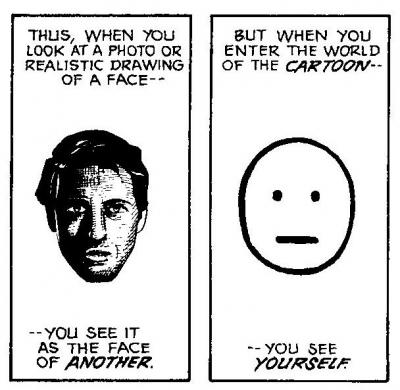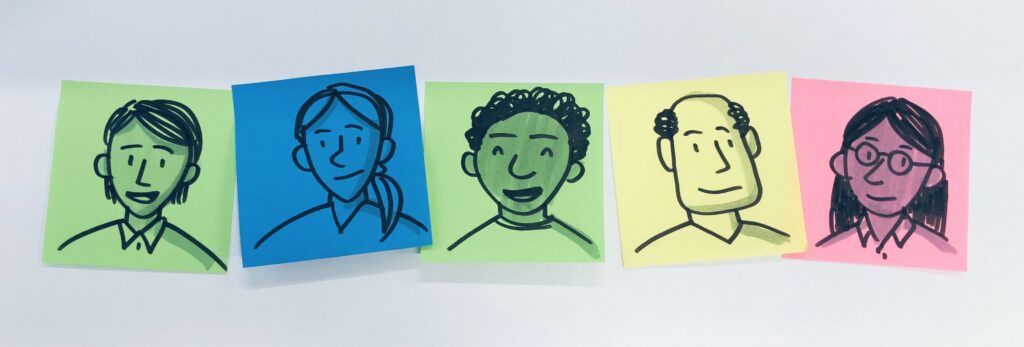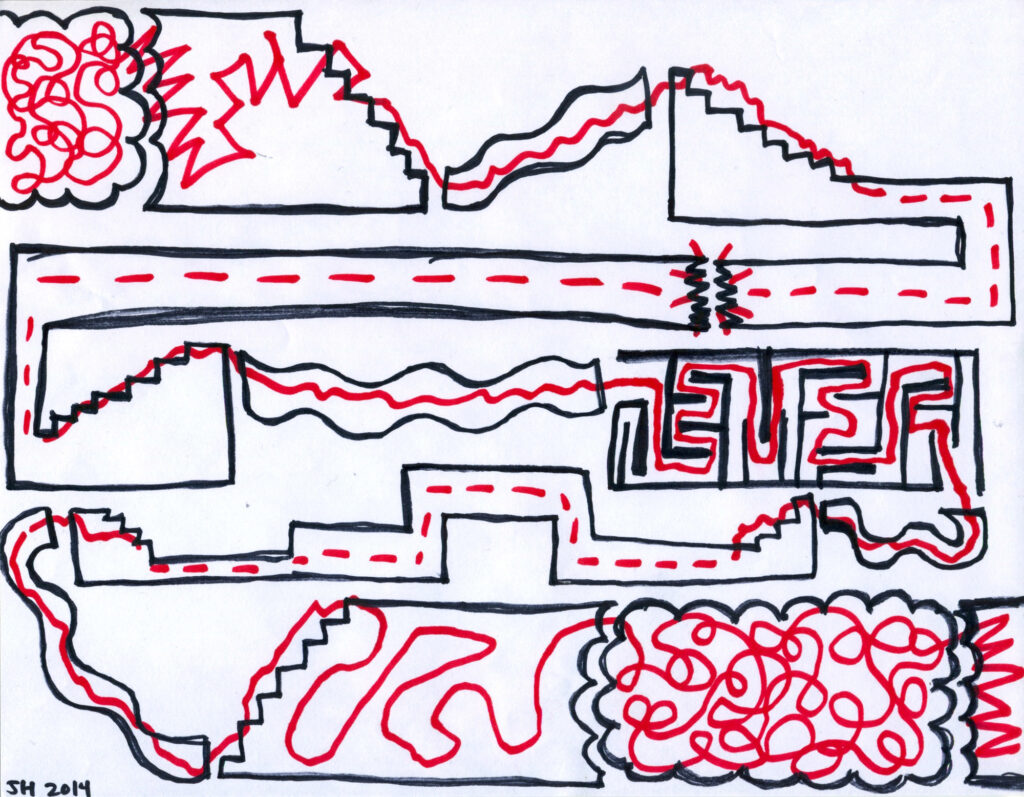
Last week was the kick off to our first summer institute Sessions Visualize This. We took theme of “The Gallery” to frame our discussion and activities. As posted in our visual syllabus, we pose the question…
“If your course were an art gallery, what are you inviting your students to see? “
We want to draw peoples attention to the visual elements in their courses, whether they are photos, graphics, diagrams, and whether they are in the TRU LMS Moodle, on another web platform such as TRUBOX site , in a video or even shown in the classroom itself.
Our email introduction we invites folks to watch a few videos, and suggests an element of music that goes along with our studio sessions. This was ill received from some of the participants, so we pulled back a bit from using it extensively in our presentation.
Practice your lines!
Enjoy some jazzy innovations
To ground participants on the page, ie the physical material that they were asked to bring with them to class we started drawing a slow and focussed spiral. Several people were keen to share their work in the chat, and I have posted everything in the participant gallery on this site. One particularly bright image share were these spiral flowers.
Finding, curating and sharing are among the many labours an instructor must undergo to include visuals in their teaching in a significant way. Learning workflows that reduce the barriers here are a critical literacy in visual work. Using Google advanced search and looking under usage rights, limits web results to those items that are openly licensed or under a creative commons license. Another good venue for searching images is to use popular image repositories such as unsplash, pixabay, flickr, wikimedia, noun project, or open peeps which specialize in particular types of visuals such as photography or icons. Some fields have their own repositories for specialized images such as imaggeo for GeoSciences.
Being able to use images in a digital space requires some understanding of image resolution and file size. Images downloaded from the web, or taken with a camera phone can often be too large causing accessibility issues. Taking a “snip” (windows) or a screenshot (mac) is a useful tip for collecting images that are ready to be used at screen resolution.
Sharing your visual with students is as important for your teaching, but them sharing images with you can benefit their learning as well. The task of managing image submissions from students can be difficult in many learning management systems. We see simple websites, like this one provided from OpenETC can provide a solution for doing this in a simple and FIPPA compliant manner. https://fungilab.opened.ca/
Gallery talk
The discussion in last weeks group veered away from the mechanics of ‘how’ to find and share images towards something more meaningful, the ‘what’ particularly in terms of representation and diversity. Participants shared their concern for finding and using images that students may “see themselves” represented in the class content. I was struck by these panels from Scott Macleods Understanding Comics that I have gone back to frequently.


It was commented that although stick figure and simple representations as this do open up possibilities for interpretation, there is still tendency to view them as ‘white’. skin tone. Some tips for drawing simple portraits of diver folks is to consider the feature shapes when drawing the head, hair, ears etc. Building a palette of materials you can use to represent different skin tones is recommended.

Further drawing
With the rich discussion and showcasing eg, we did not get into as much of the hands on drawing as we expected, something we will correct for the next session. We offered participants a challenge for the next session if they wanted to practice drawing diversity in their lines. This is a great one from Nick Sousanis called Grids and Gestures, and comes from his discipline comics scholarship. He has done great write up this activity over on his site, and we have used an eg as our Gallery feature image on this site.

For a full schedule of our upcoming workshops, check out Workshops Without Walls and the Calendar. https://tru.libcal.com/admin/calendar/7574?d=2021-05-27
